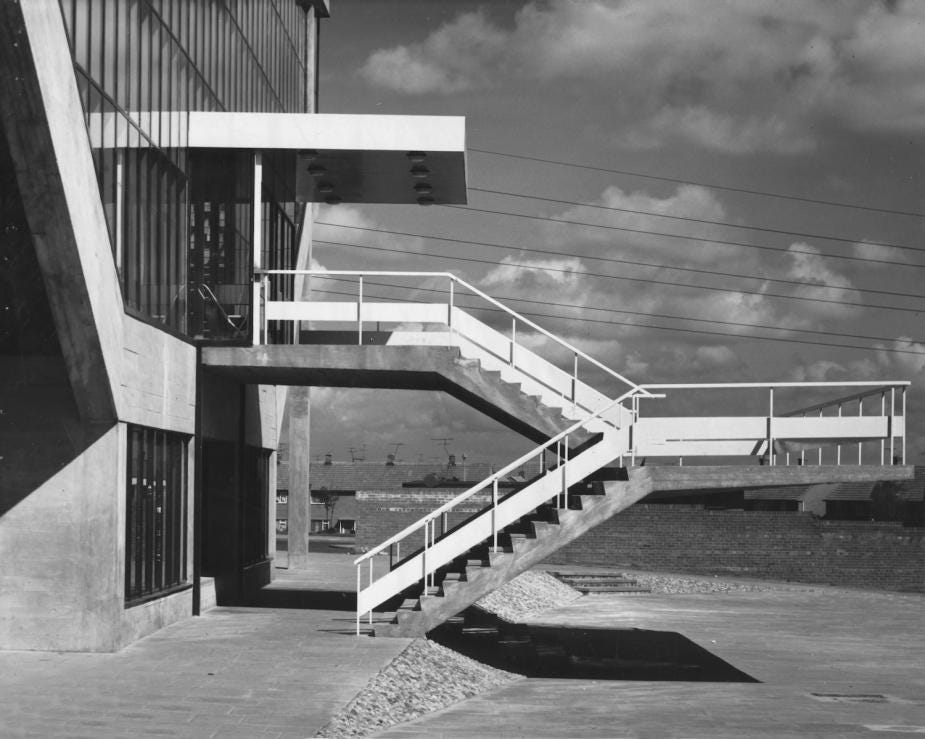Digging into Concrete Dreams
A free event will debate the architecture of concrete and steel which changed the face of Tyneside Tony Henderson reports
The reign of concrete and steel in reshaping places like Newcastle and Gateshead will be explored in an event which closes a nine-month project that examined the transformation.
Concrete Dreams opened at the Farrell Centre at Newcastle University last September, focussing on projects like the Central Motorway, and the Newcastle Civic Centre, as well as the everyday world of new schools, libraries and housing that were part of the radical changes across Tyneside in the 1960s and 1970s.
Featuring exhibitions, installations, events and an education programme, the project has examined the ideals and aspirations behind the lasting impact of Modernism – which splits opinions - on cities like Newcastle today.
Modernism closely linked design to the function of buildings and structures, dictated a lack of ornament and “unnecessary” detail, the use of reinforced concrete and steel, components positioned at 90-degrees to each other and an emphasis on horizontal and vertical lines often with flat roofs, ribbon windows open plan floors and white or cream frontages.
On Wednesday (May 28) Newcastle will host a free talk on The Modernist City in the 21st Century.
Speakers at the event in the Herschel Building at 6pm are Richard Brook author and professor in architecture at Lancaster University; Catherine Croft – director of the Twentieth Century Society and author of Concrete Architecture; and Owen Hopkins, director of the Farrell Centre, and author of Lost Futures: The Disappearing Architecture of Post-War Britain and The Brutalists.
“Modernism became the single most important new style or philosophy of architecture and design of the 20th century. It was associated with an analytical approach to the function of buildings, a strictly rational use of often new materials, structural innovation and the elimination of ornament,” said Mr Hopkins.
“In this event, we explore the status of the modernist city in the 21st century in Newcastle and beyond.
“How do the interventions of the modernist era shape our understanding and experience of the city today? What’s been lost and what should be saved, who gets to decide and why?
“What challenges does the modernist city pose to how we designate and value ‘heritage’? And what possibilities does the energy and optimism of the ideas that underpinned the modernist era offer us today amid the myriad challenges of the 21st century?”
Modernism was not the first transformational surge which shaped the Newcastle of today.
Developer Richard Grainger, working with architects including John Dobson and Thomas Oliver and town clerk John Clayton, pulled Newcastle from its medieval past by creating a striking new centre during the 1820s and 1830s.
The area around Grey Street, Blackett Street, Grainger Street, Clayton Street and Eldon Square together with Grey’s Monument, the Theatre Royal, the Royal Arcade and the Grainger Market was described as a ‘City of Palaces’.
The next sweeping change arrived in the 1960s and 70s with city council leader T Dan Smith’s largely concrete vision of Newcastle as a “Brasilia of the North.” Casualties included chunks of Eldon Square and the 1832 Royal Arcade commercial and shopping centre, while the Central Motorway East, in tackling the traffic challenge, formed a barrier to the city centre.
But the new Civic Centre and the Byker Wall estate won international acclaim as the urban transformations of the 1960s and 1970s left an indelible, if much contested, mark on Tyneside.
So is another shift in the evolution of the city on the cards? If so, when and on what scale? Wednesday’s talk is likely to address this and more. See the website for more information.





Good Question: "And what possibilities does the energy and optimism of the ideas that underpinned the modernist era offer us today amid the myriad challenges of the 21st century?”